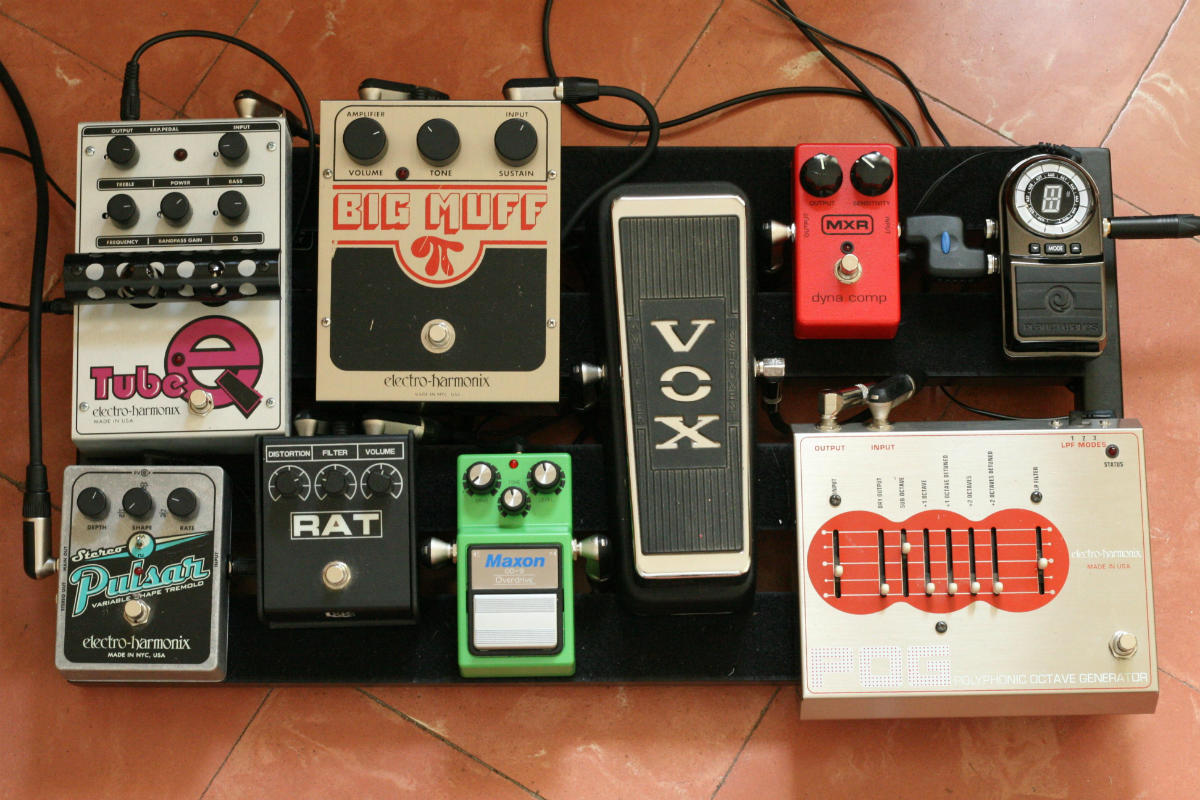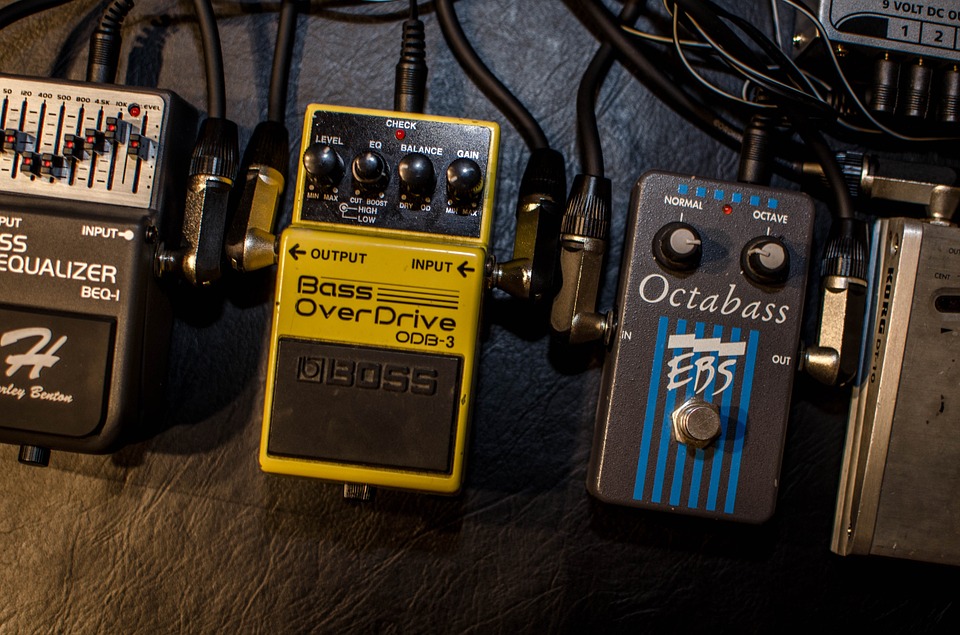
Fun with Guitar Pedals Part 2
‘Ello! Yes, I am back for more pedal talk (with pedals!). Bill, the oh-so tired artiste, is “on holiday” of course (from what, I don’t know. He certainly doesn’t do much here save for show up once a fortnight to complain about the state of Rock & Roll).
Let’s see… In last month’s post, we did the boring old technical aspect of sticking things in between your guitar and amp and now the fun bit: the units themselves.
Distortion pedals fall into 2 categories: overdrive and fuzz.
Overdrive Pedals
Overdrive attempts to mimic the sound of an amplifier distorting, or “breaking up,” as its volume approaches the maximum. This is simply a matter of putting more signal through the amp than it can handle cleanly. It is generally a warm, tube-driven sound. It is quite literally “turning it up to 10” or, in the case of Spinal Tap, 11. (For those of you reading this who cannot reflexively name all four of the Beatles, Spinal Tap is a fictional band. Amps that go to 11 are not.)
The most widely used overdrive pedal is probably the Ibanez Tube Screamer (old ones are now greedily sought after). Although, Boss overdrives are also always in the game. Very nice.
Fuzz Pedals
Fuzz, on the other hand, is actually reshaping the sound wave. A natural sound wave rolls like, well, a wave. There are peaks and valleys with smooth, round transitions between them. A fuzz chops off bits of the wave, so it becomes angular. It strip-mines it, I suppose. The shape can often be manipulated. Common altered shapes are sawtooth, square, and whatever the pointy one is called, I forget.
The most famous fuzz box in Rock & Roll is the one Keith Richards used on “(I Can’t Get No) Satisfaction.” It was a Gibson Fuzz. He bought it at a music store in Los Angeles when the Stones were recording at Capitol Records in hopes of having his guitar sound like a horn or saxophone. The Stones did not think what was recorded would even be used in the final version of the song. The now famous guitar riff was supposed to be replaced at a later date by horns, but they were on tour and had to move on. Then, while on said tour, they heard it on the radio, which was a great surprise, and it went on to hit #1 in both the U.K. and U.S. charts, which was an even greater surprise (this quickly ended all talk of “finishing” the song).
Keith has said that the version Otis Redding recorded is more what the Stones originally had in mind and, incidentally, Keith wrote the riff for “Satisfaction” in a Florida Holiday Inn. The story goes that he awoke one morning to see that the tape recorder by his bed had run to the end of its tape, but he didn’t remember having taped anything the night before (what a surprise!). Curious as he has always been, he rewound the tape and played it back. What he heard was, to paraphrase the old Stone, “a few minutes of the satisfaction riff in a sort of folky, strumming style followed by 45 minutes of snoring.”
(Quick aside as to the reference of Keith being curious: Tennis great John McEnroe, a longtime friend of Keith’s, relates the story of Keith inquiring about the height of the average male at the time of the first existing tennis courts. Keith was interested in why the nets were hung at their original height and wondered that since people have gotten taller, the nets might now need to be raised accordingly. John was, he says, left speechless (something quite unusual for him).
Oops! There’s the class bell. That went by fast. See ya next time!
-Pedals


